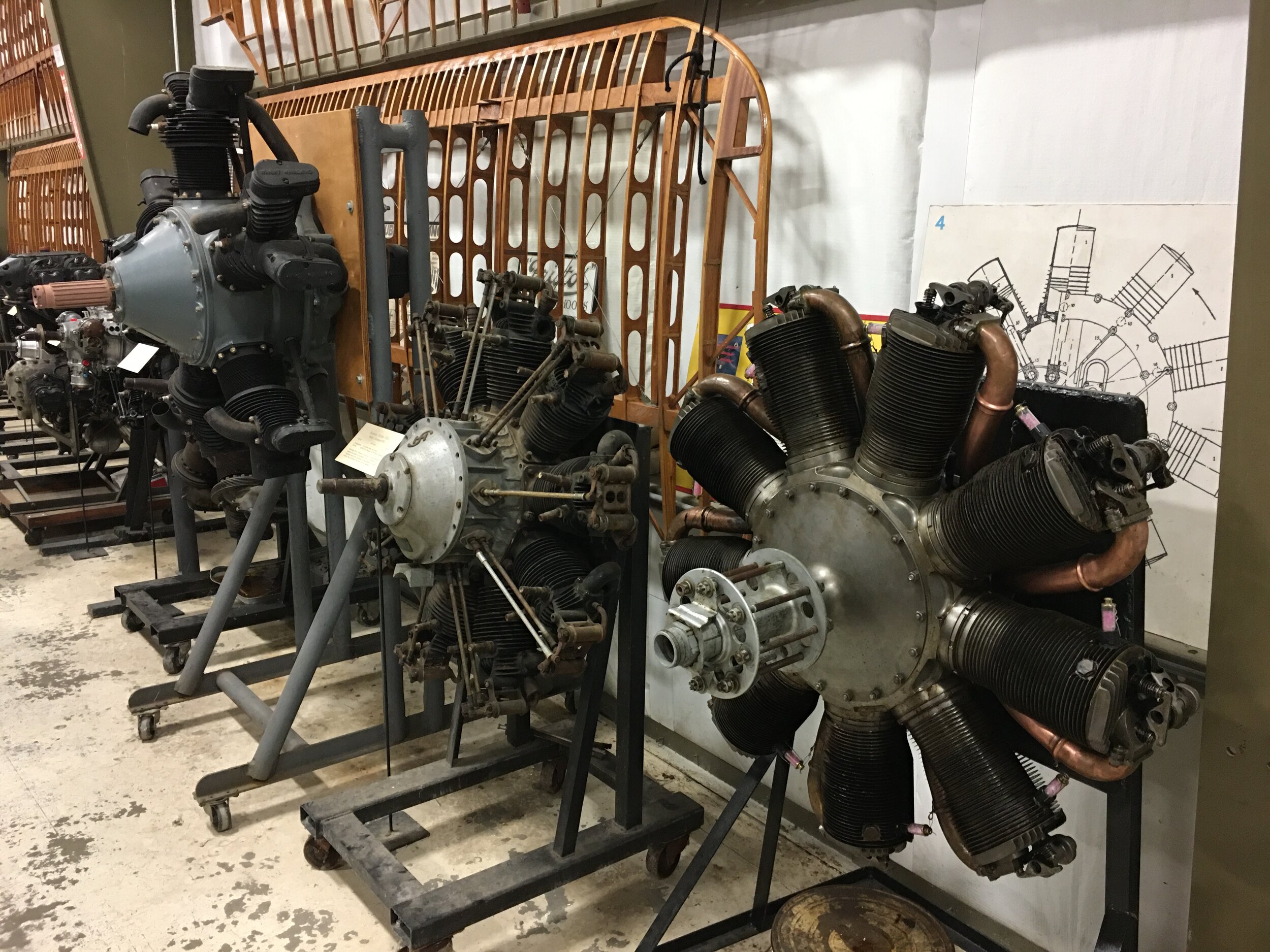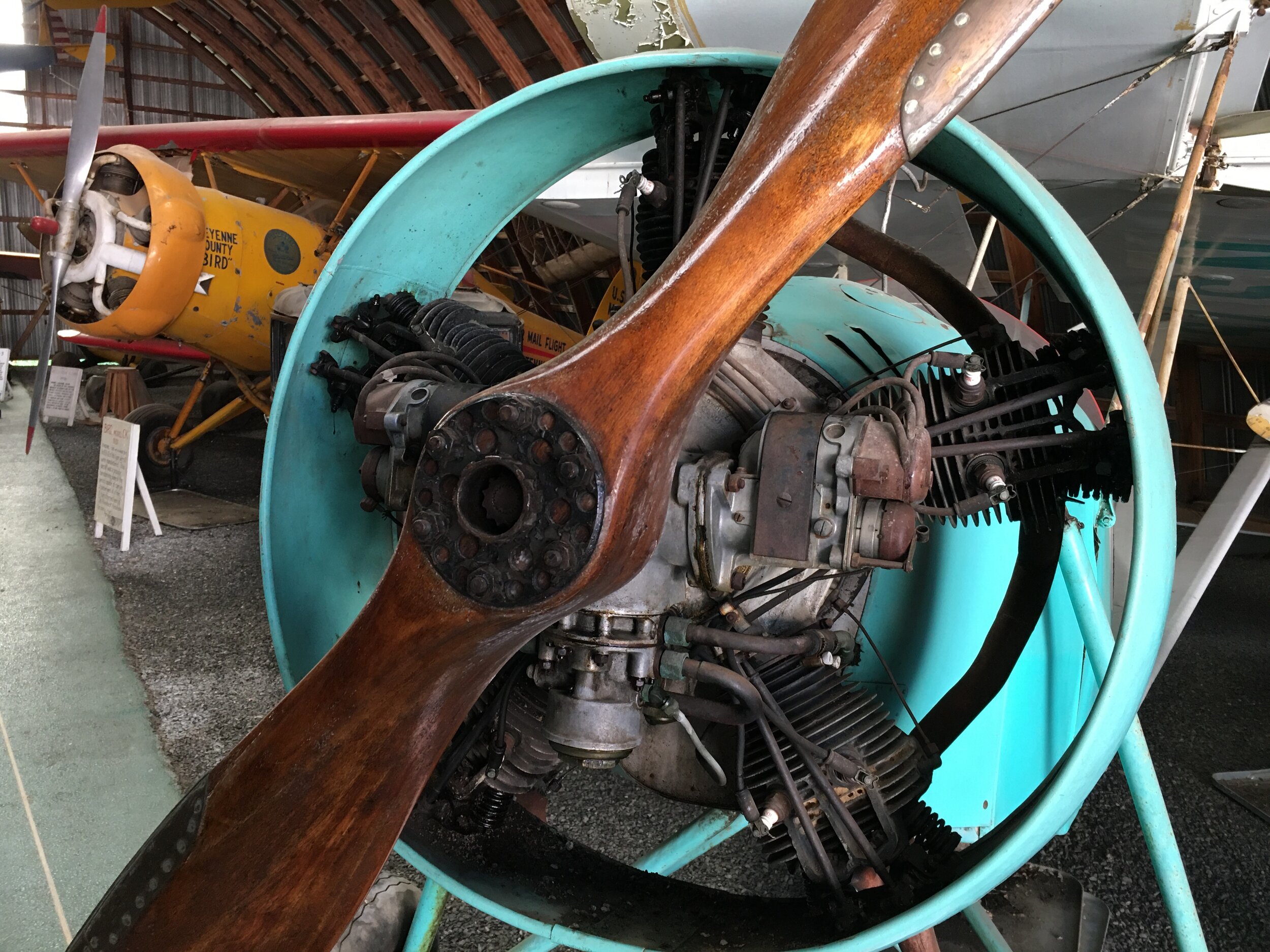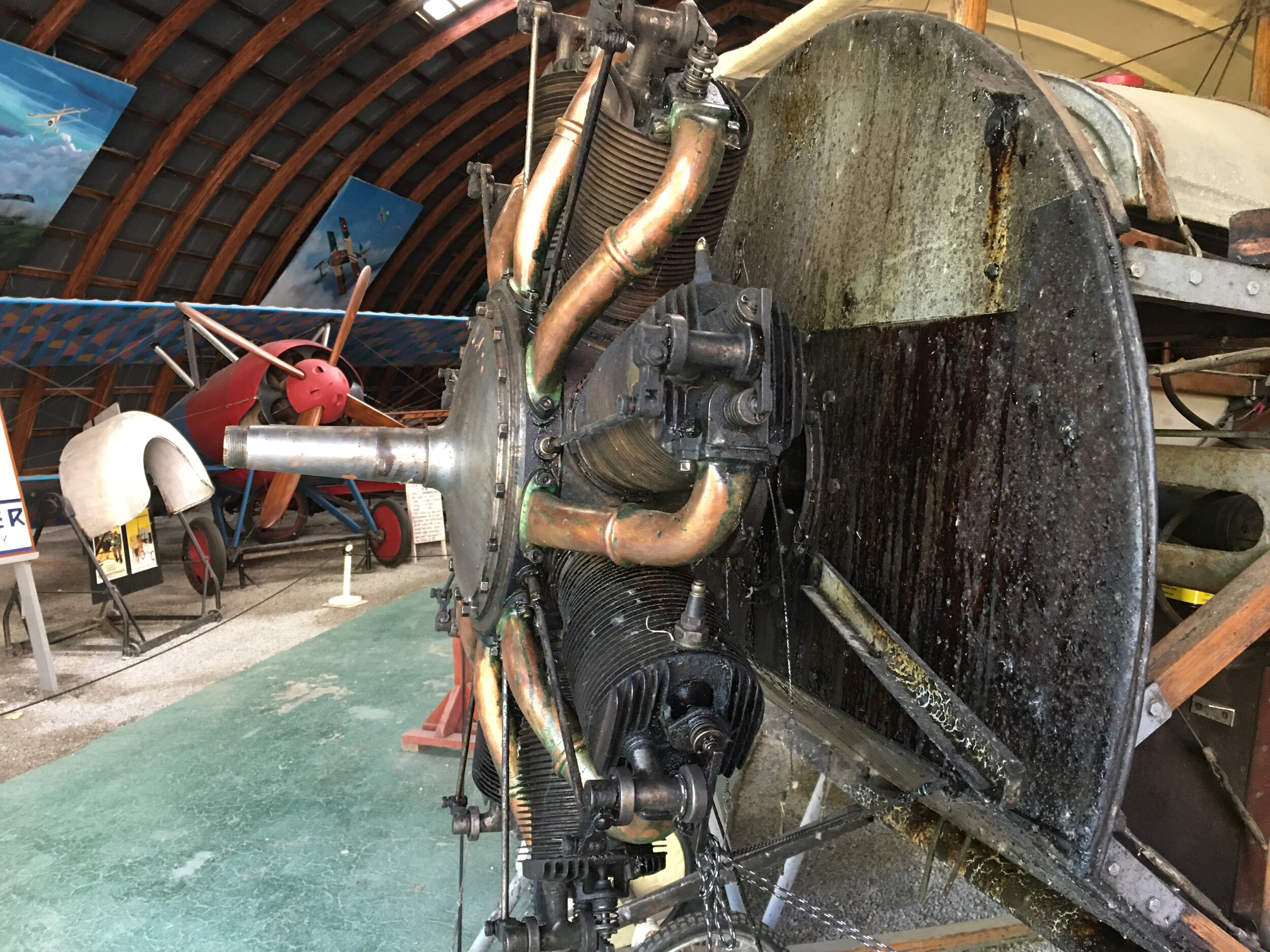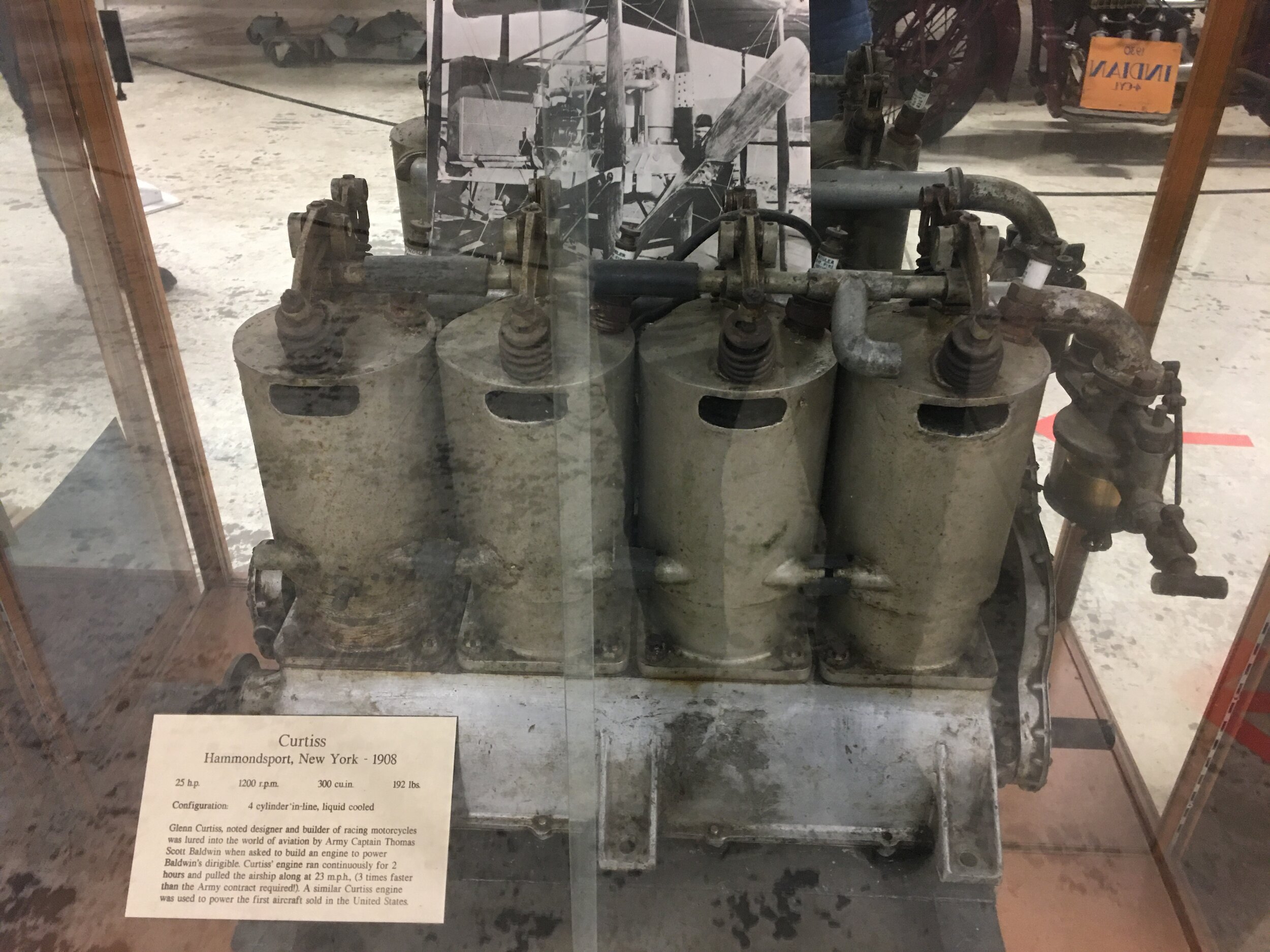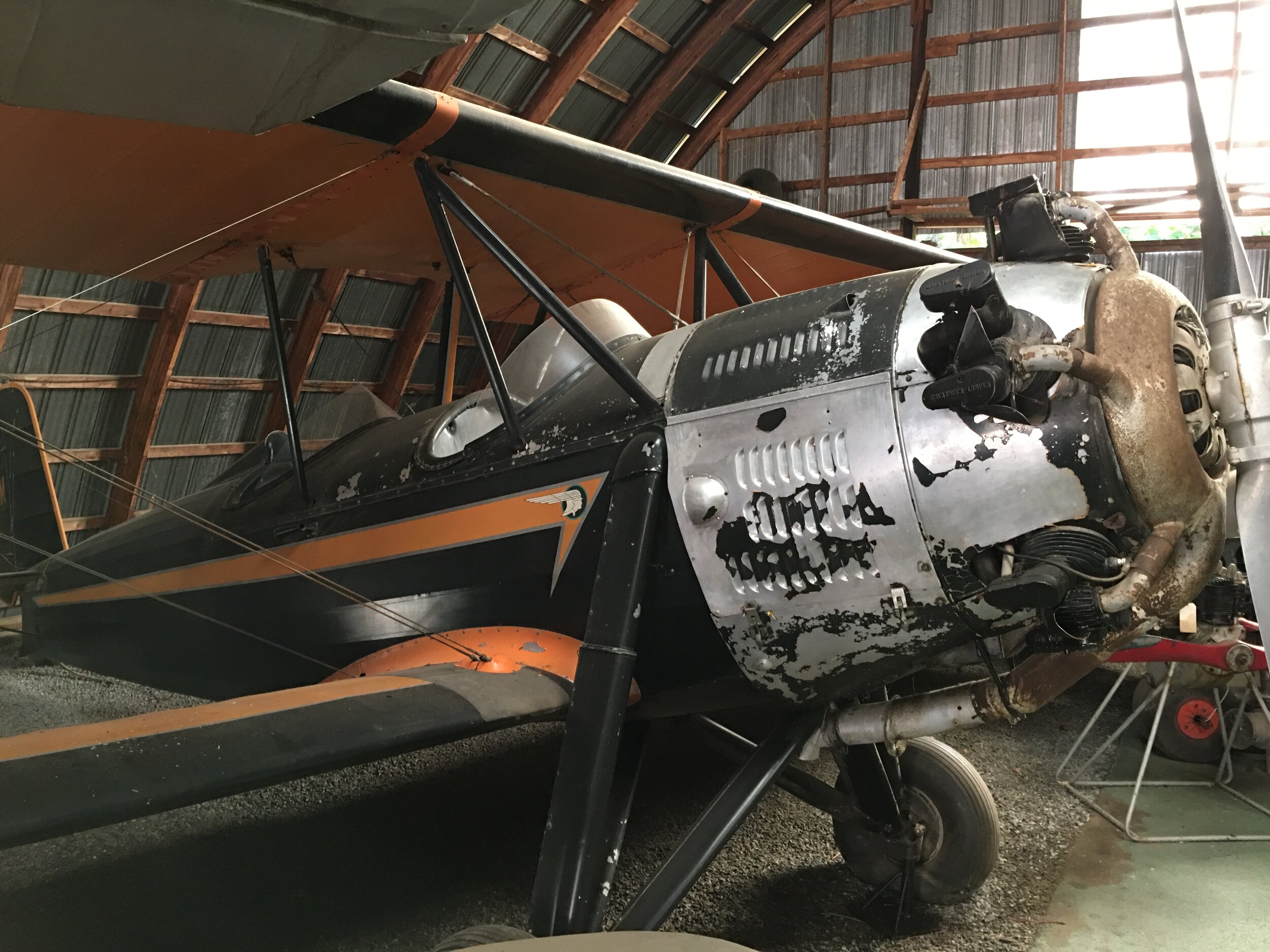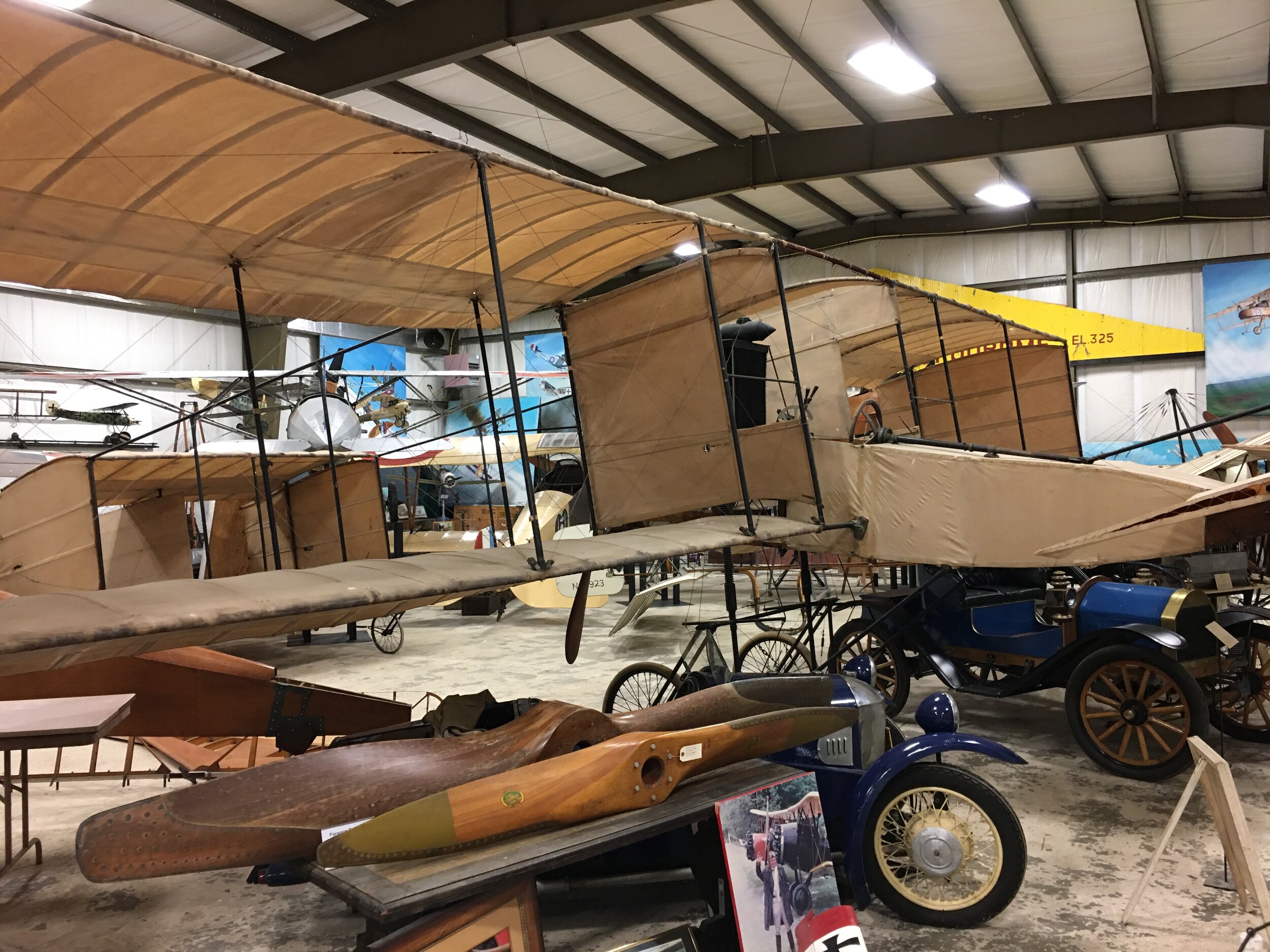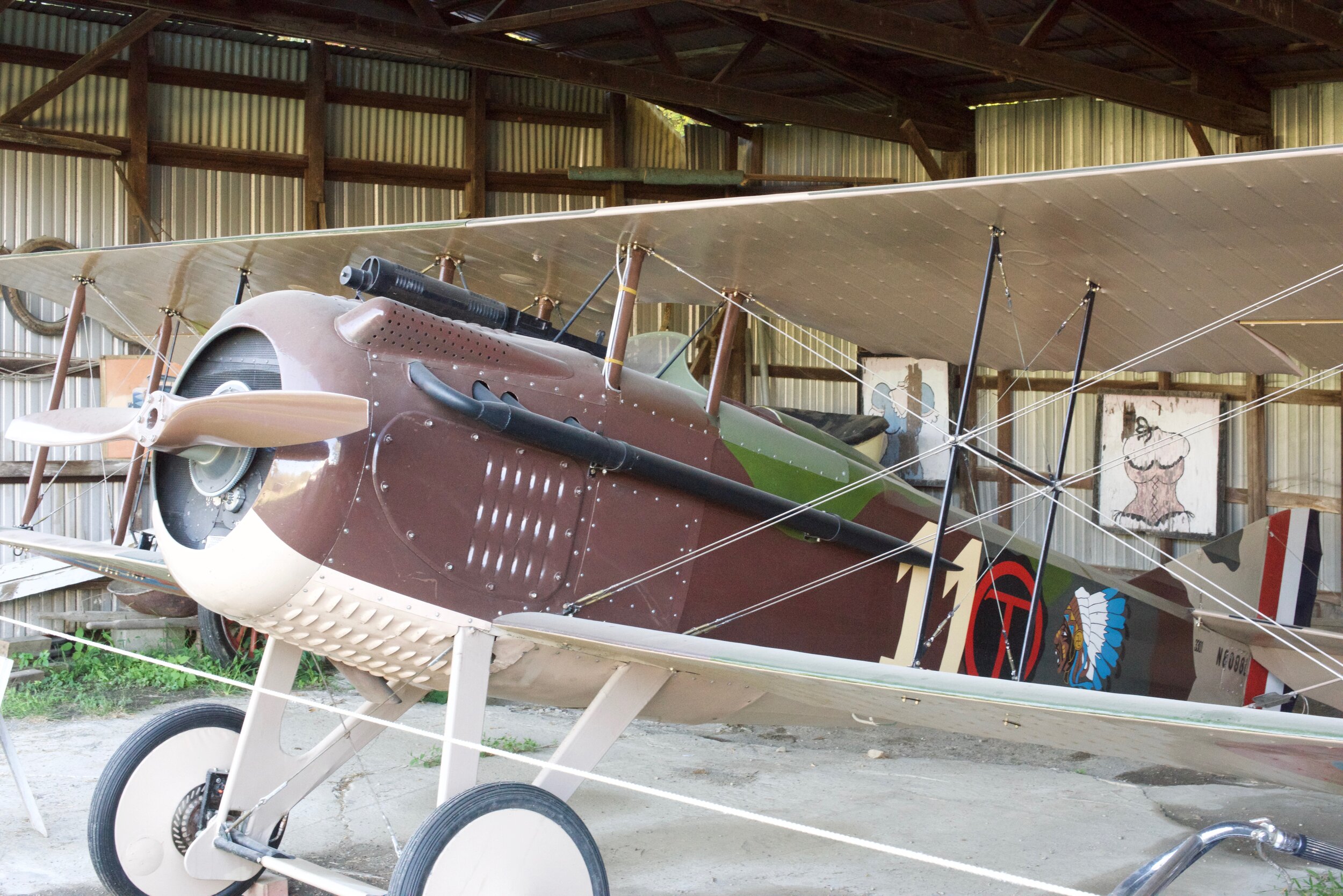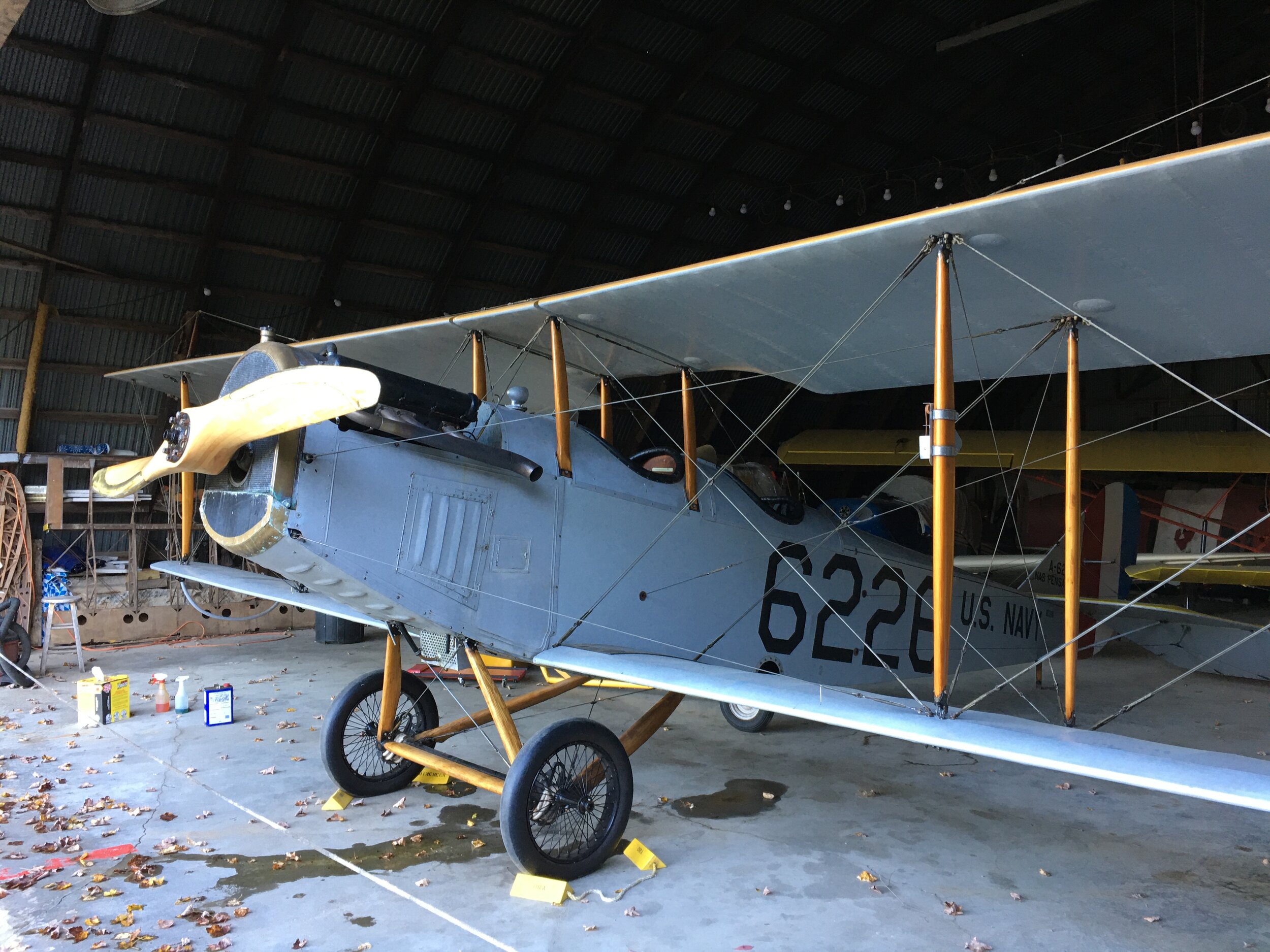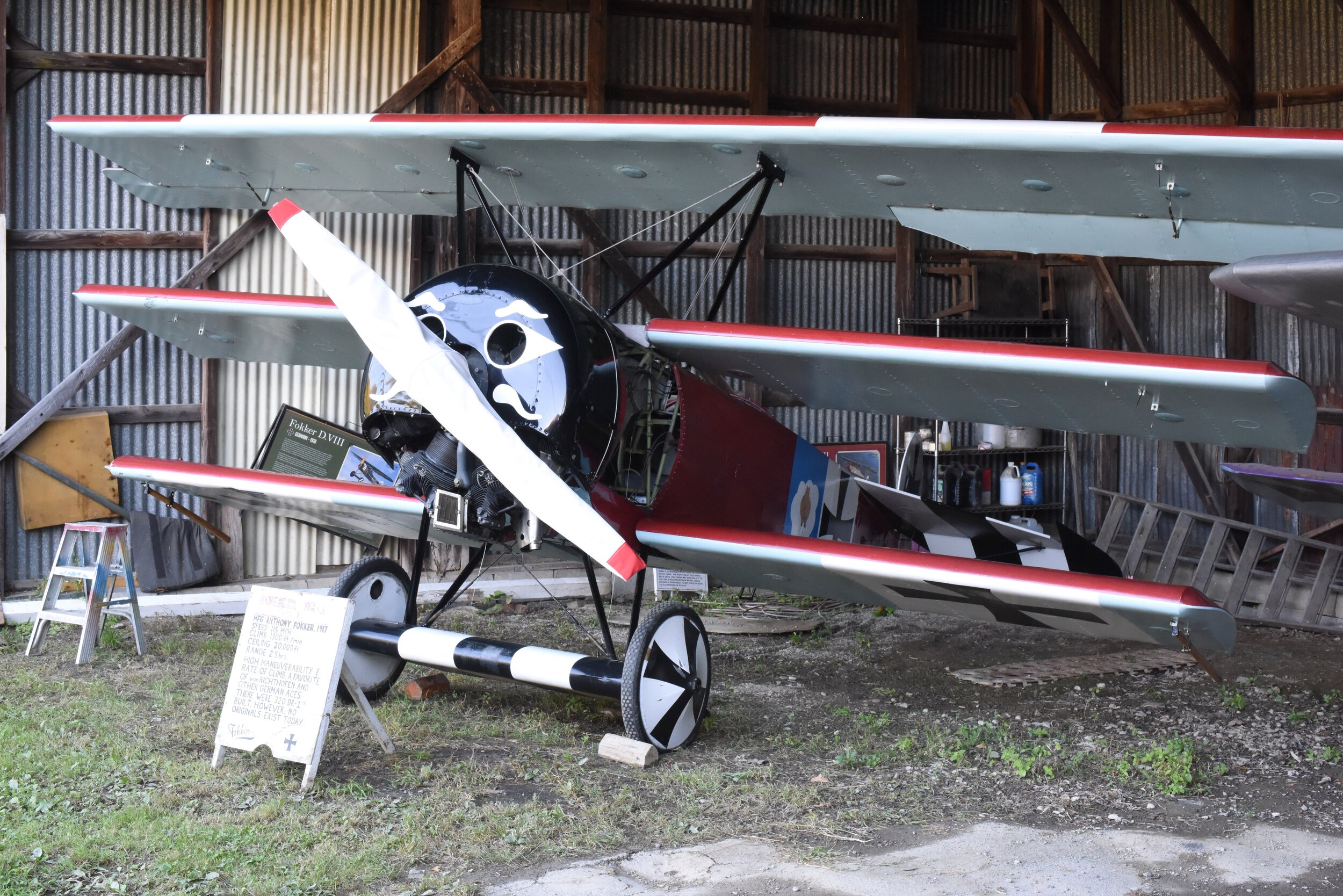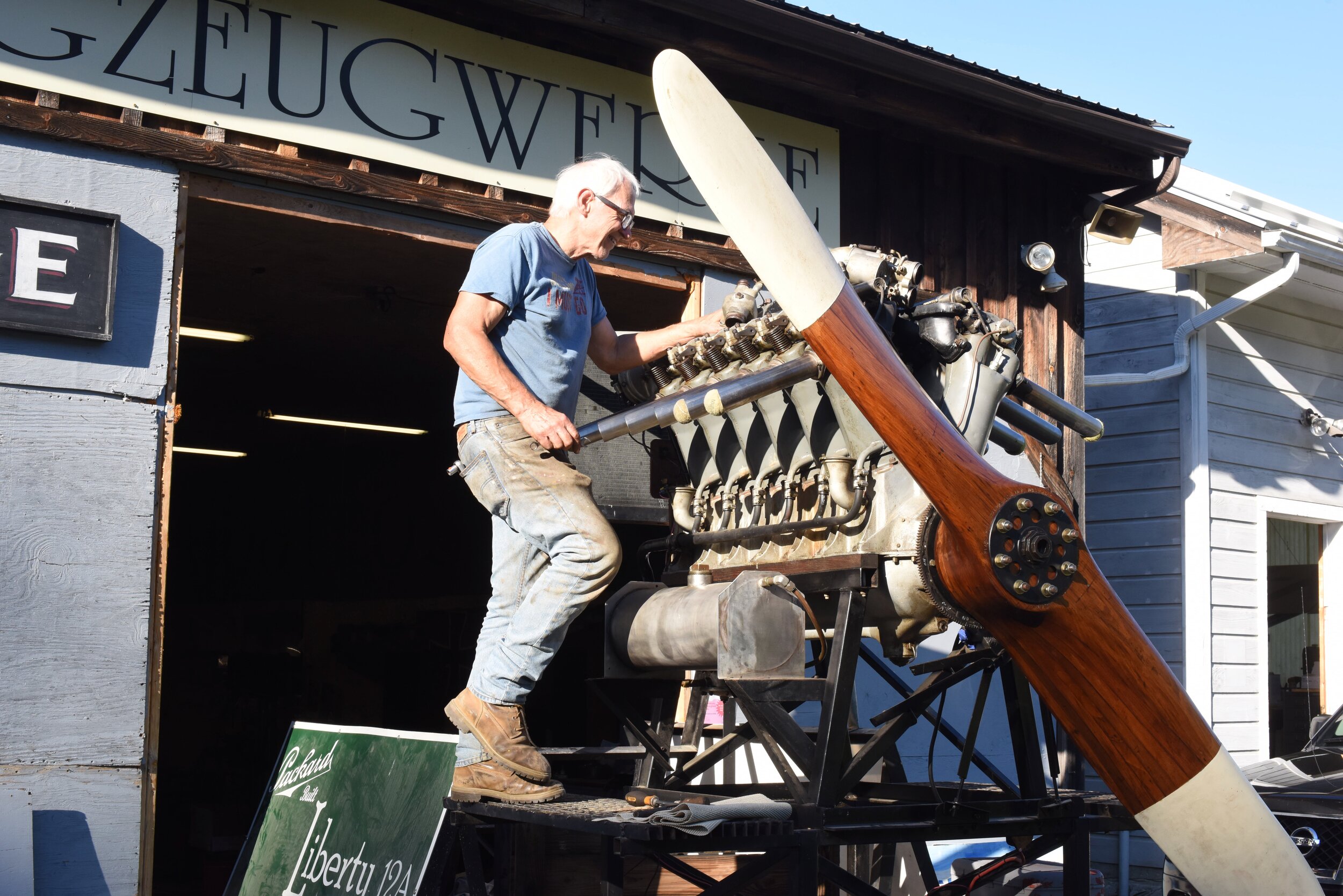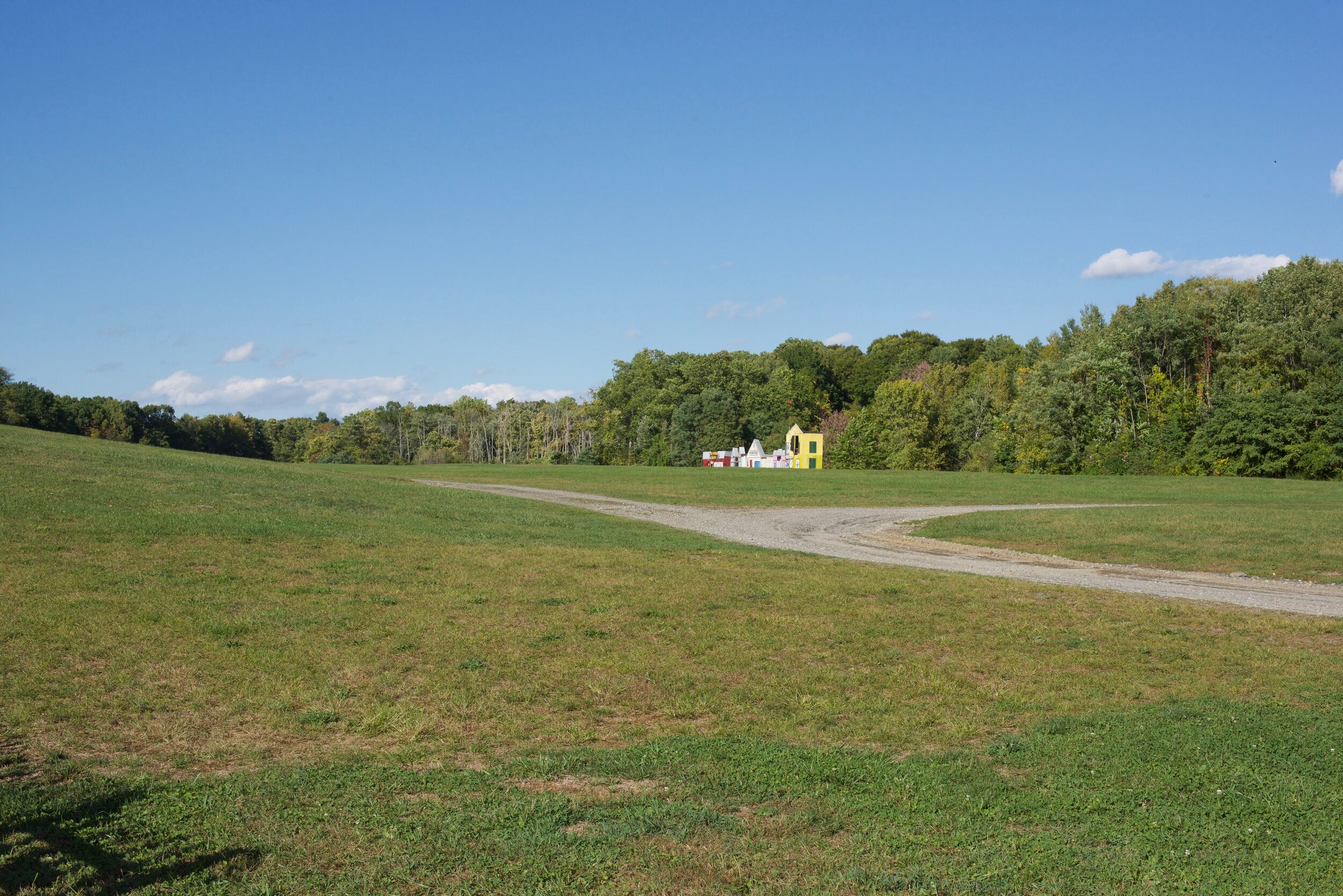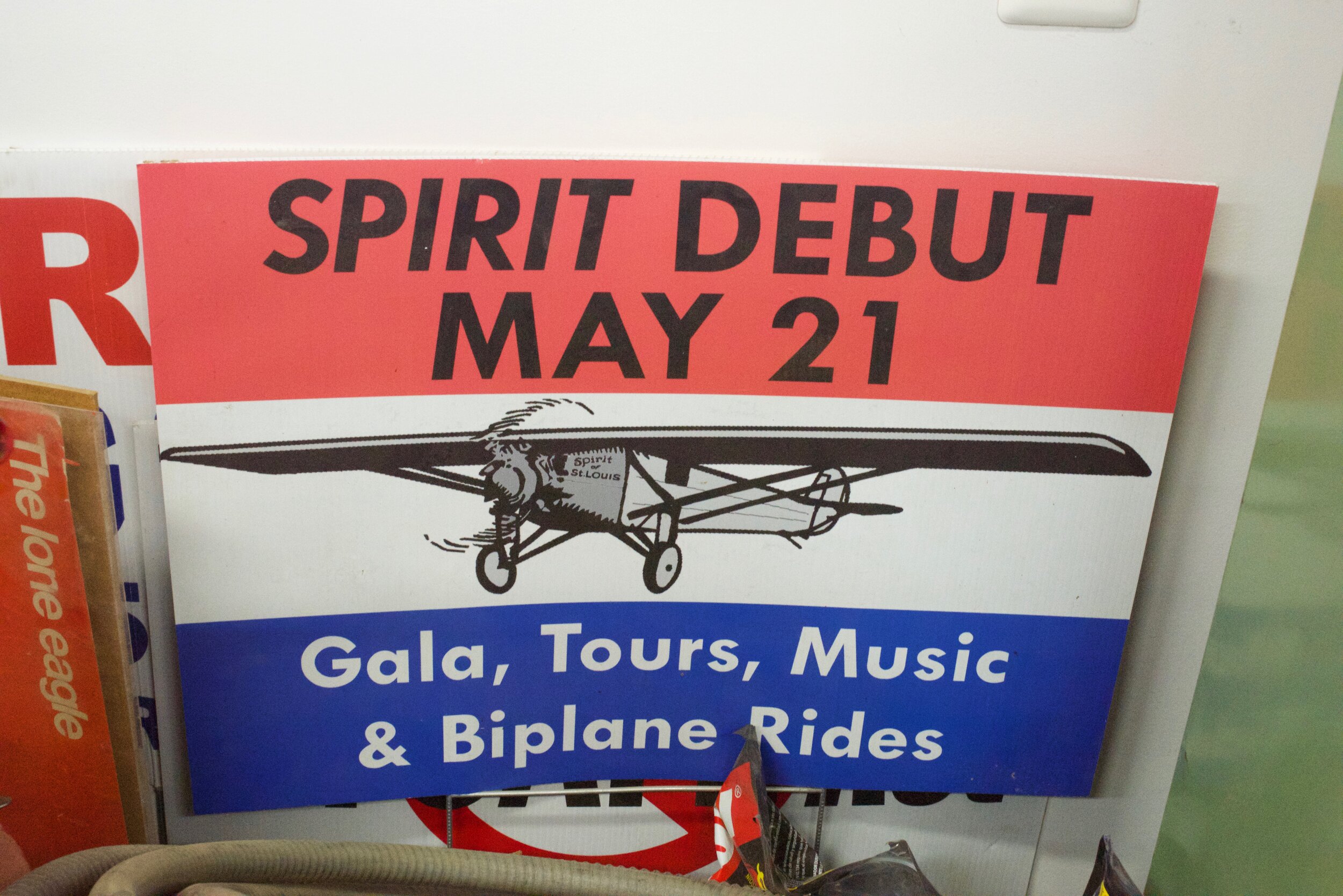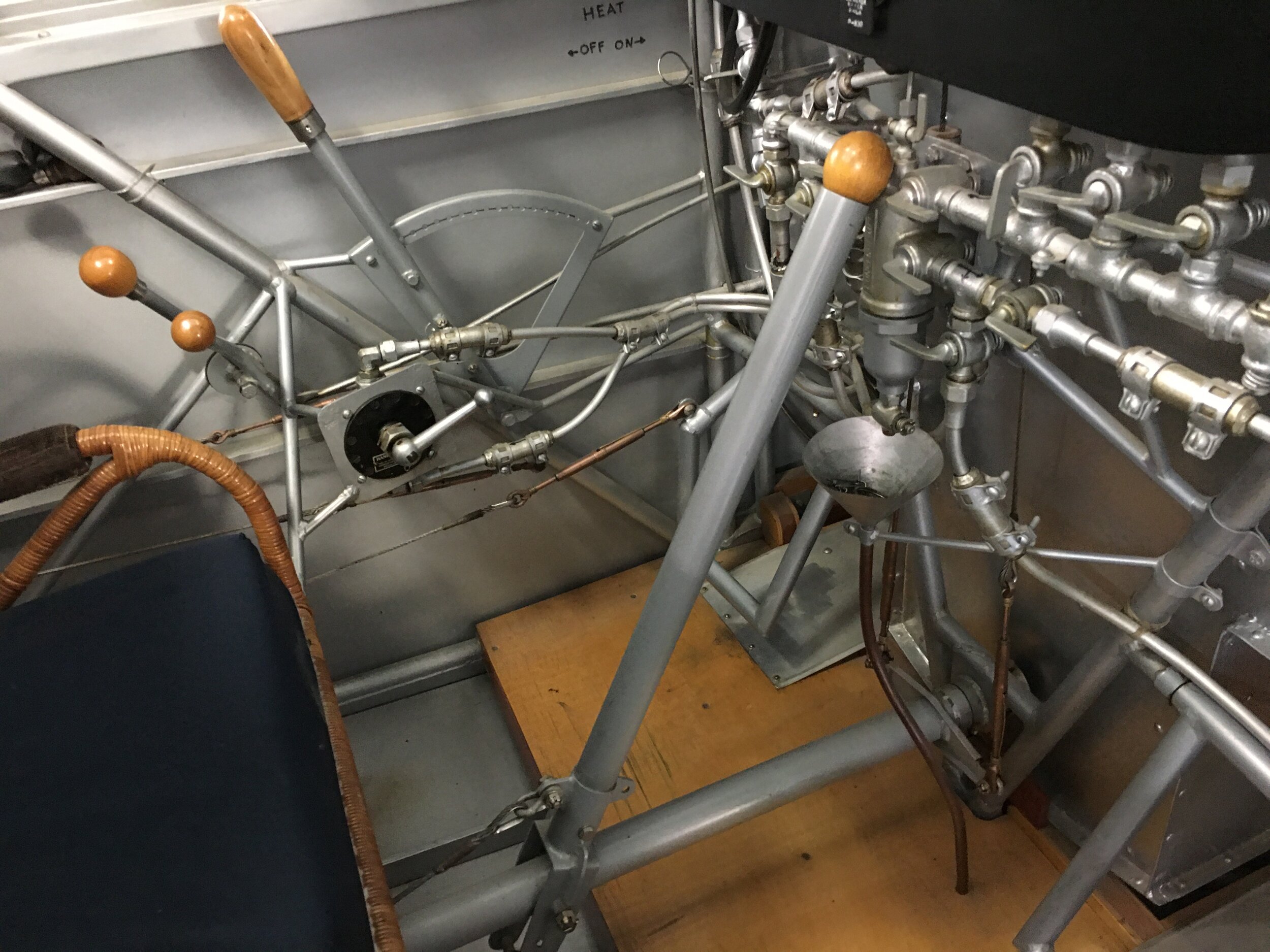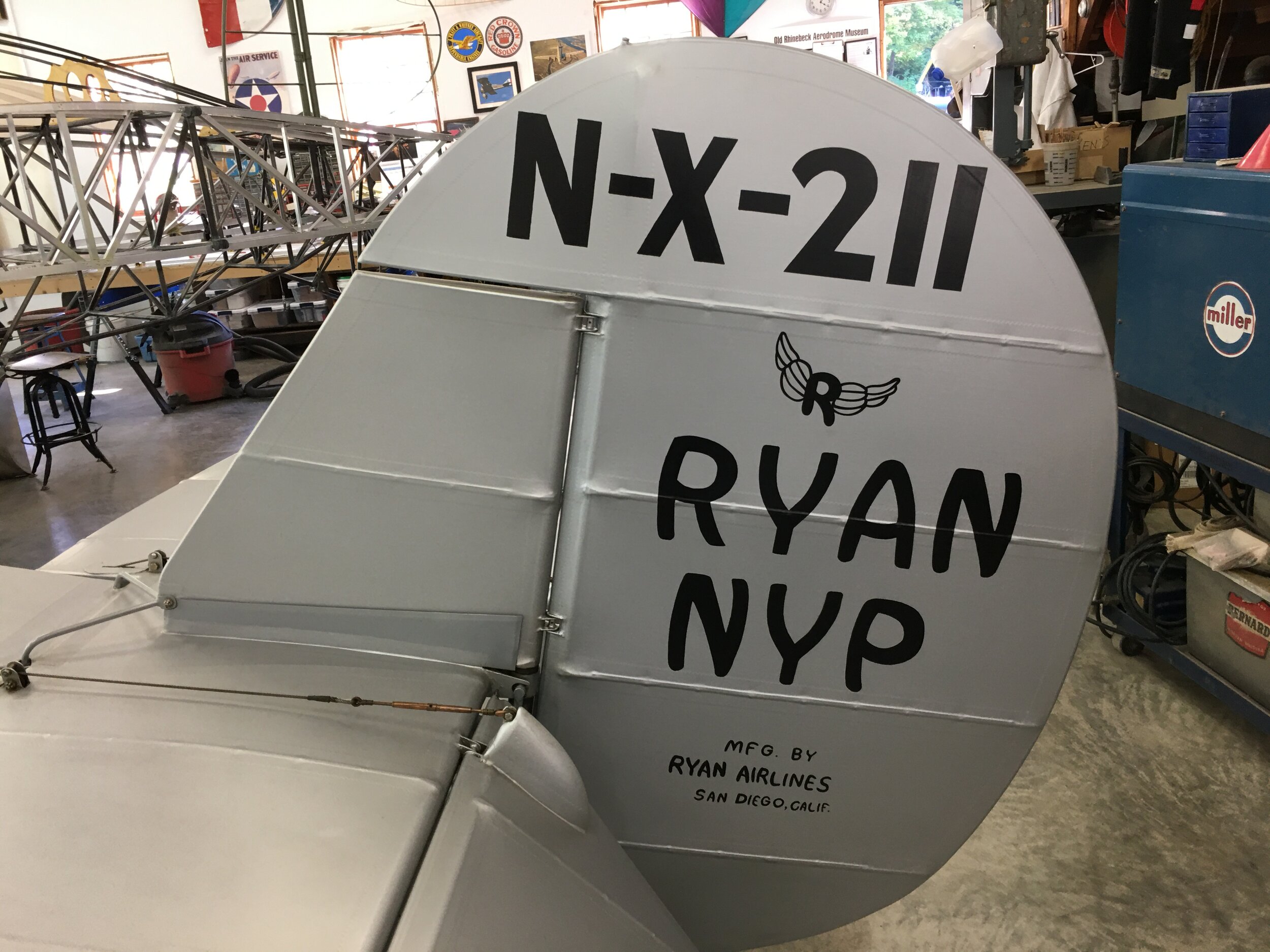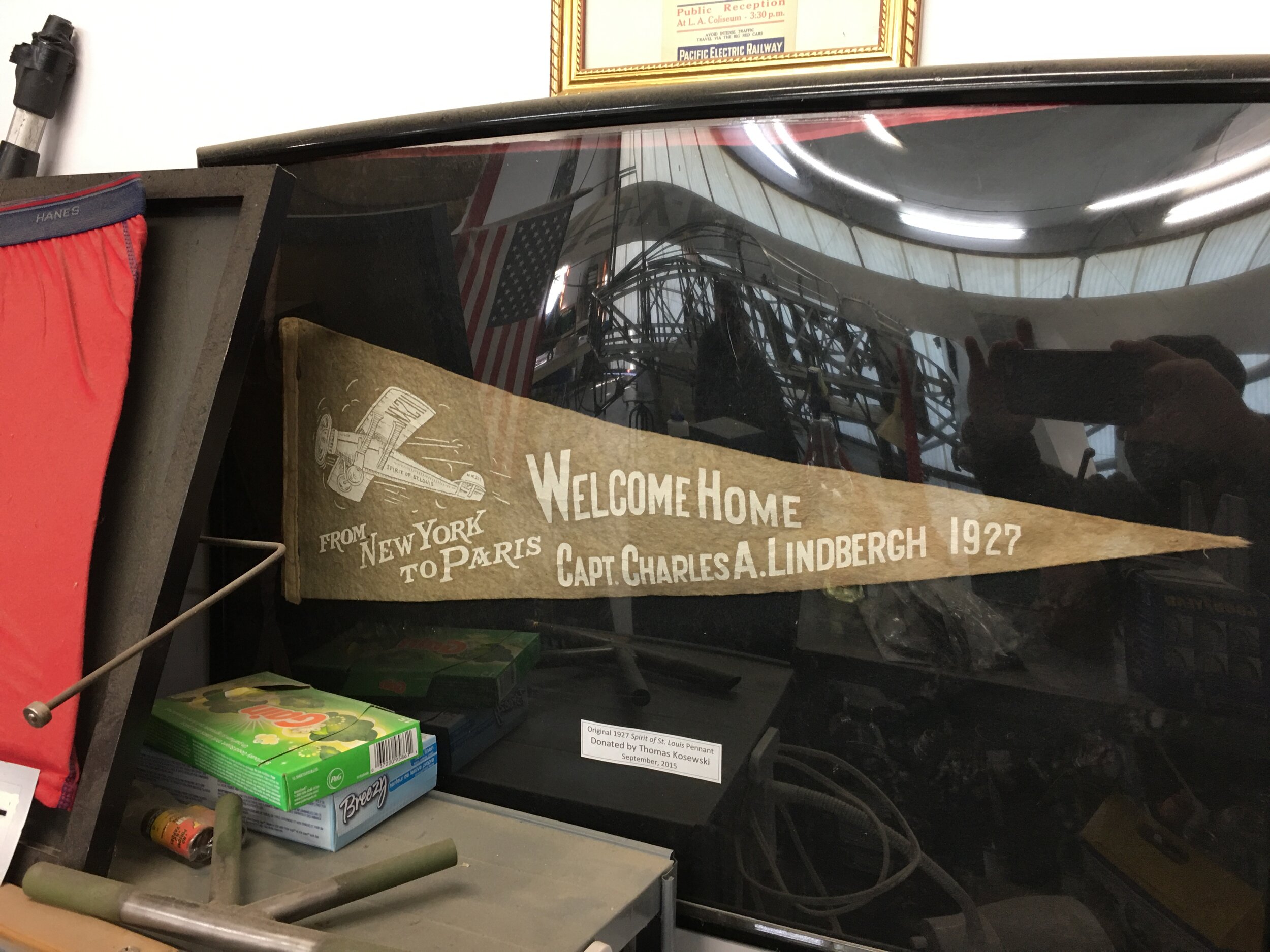The Old Rhinebeck Aerodrome
Words, photos: Mike Blanchard
Just north of Poughkeepsie, N.Y., in the impossibly historic town of Rhinebeck, on a winding rural road, sits the Old Rhinebeck Aerodrome: a flying tribute to the pioneers of aviation, and World War I airplanes in particular.
The aerodrome was the brainchild of Cole Palen, a larger-than-life character with an immense love for old airplanes and the desire to share them with the public.
Palen was in the military during World War II. On being discharged he took flight instruction and aircraft maintenance on the GI Bill at Roosevelt Field. He was so enamored of its collection of old biplanes that he would get into the hangar where they were kept and sit in the cockpit to eat his lunch. He idolized the famous pilots and planes of the pioneers of aviation.
Sometime after he graduated a friend let him know that Roosevelt Field was selling off its collection by sealed bid. Palen ended up with six aircraft. He was given 30 days to remove the aircraft from the property, which was quite a task. The planes had to be partially disassembled and trucked the 200-mile round trip. He stashed the planes as best he could in chicken coops and outbuildings on his property.
In 1951 he purchased a tract of wooded land, cut out a grass runway and built some hangars. In the documentary film, “The Story of The Old Rhinebeck Aerodrome WW1 Planes, I Fly Them, I Fix Them, I Break Them,” Palen talks about the early days of the Aerodrome.
“It was strictly a low-budget operation. But I loved it that way,” he said. “Rebuilding planes in the living room of the house; getting in some flying; to me that was, well, the most exciting time of my life, creating this World War I aerodrome.”
As he got himself established, Palen put on the occasional flight demonstration. By the mid-’60s, he developed a concept for a WWI airshow. Every weekend between May and October, Palen and his staff and friends put on a show featuring early aircraft flight demonstrations and aerial dogfights.
Cole Palen in the ‘50s with three of the first six aircraft he purchased from Roosevelt Field. Front to back: SPAD 13, Nieuport 28, and Fokker D-7. The SPAD and the Fokker now reside at the Air Force Museum, and the Nieuport can be seen at the Udvar Hazy Center. Photo courtesy of Rhinebeck Aerodrome Museum.
Palen created a slapstick melodrama that was played out with antique military vehicles and airplanes dropping ash bombs. Palen played the dastardly Black Baron. He created a cast of characters and a plot that entertained hundreds of enthusiastic spectators. It became a big deal.
Michael Patti grew up in nearby Hyde Park in the ‘60s. His grandfather had been in WWI and told him stories of famous flyers like Eddie Rickenbacker. “My parents took me there when I was eight or nine. I think it had recently opened. Rhinebeck was just this little town. They had amazing dogfights. … It was an amazing, amazing thing.”
Over the years the shows have featured many famous aircraft, including SPAD 13, Sopwith Pup and Dolphin, Fokker DR-1 and D-7, Nieuport 28, Albatros and Curtis JN-4. Some of the rarer planes were built by Palen or his crew using original engines, but a number of the aircraft are original machines. One of the rarest machines they demonstrate is a 1909 Bleriot, reputed to be the oldest flying aircraft in the U.S.
With the help of his wife, Rita, the Aerodrome became more successful, allowing Palen to purchase and restore more airplanes. The level of commitment it took to build the Aerodrome is astounding, but Palen insisted that people should see the planes flying, not just in a static display somewhere in a museum. Friends say that he had a very determined, positive and persuasive character that made people want to help.
In addition to the airshow the Aerodrome hosts radio-controlled (RC) airplane fly-ins that attract hundreds of people. The planes are limited to designs of the 1903-1939 period. You can also purchase a ride in a biplane to get the real experience.
Many enthusiasts credit Palen as a pioneer in the field of preserving and restoring vintage airplanes. Much like the early history of the automobile, old planes were just junked to make room for the newest model. Eventually people began to realize the value and historical significance of these old machines.
But airplanes are not like cars. They take a higher level of skill and attention to detail to keep in the air. A good vintage aircraft mechanic has to know how to work on engines, but also be a machinist, woodworker, electrician, body fabricator, welder, painter, and know how to cut patterns and sew. It requires a very exacting craftsman.
Palen and his crew of mechanics became regarded as some of the best in the country, earning the respect and trust of institutions like the Smithsonian and the Air Force Museum. He and his crew re-created and restored rare and lost airplanes like the Fokker DR-1 Tri-plane, Sopwith Dolphin and many others. They eventually put together an impressive collection of airplanes, ranging from a replica Wright Flyer to famous planes from the 1930s.
In 1993, Palen suffered a stroke. When he recovered some he established the Rhinebeck Aerodrome Museum Foundation to carry on the work of educating and entertaining the public, restoring and building planes. This also involved building the museum portion of the facility. Palen passed away in December 1993 in Florida.
Since then the foundation has carried on with Palen’s life work. The Aerodrome is not currently putting on shows due to COVID, but as soon as things get back to some kind of normal they will be flying again.
Michael Patti and I visited on a quiet fall Wednesday and, finding the place to ourselves, started off at the museum: four big buildings containing about 30 airplanes and a large number of engines and memorabilia, most of it original to the pioneers of aviation.
One of the first things you see on walking into the museum is an original first-model 1908 Voison. An incredibly rare bit of aircraft history. The plane was built by Voison for Norvin Rinek as a test bed for his aircraft engines. Next to the Voison sits a Bleriot mono-plane and across the hall Charles Nungesser’s Nieuport 83 proudly sits with its black heart and skull device on the fuselage. The sheer volume of historic artifacts in the museum is almost overwhelming.
The museum is where you should start your visit. A walk through the history of early aviation at the museum will give you a greater appreciation of the Aerodrome and its flying planes
And so we wandered down to the Aerodrome to see if anything was going on. There were no airplanes flying, except for a big red-and-white RC bi-plane, doing loops in the bright fall sun, but there was some activity around the hangars. In the yard there was a stand-mounted Liberty engine being fixed.
The door to the main shop was open, and a couple guys were ducking in and out. We poked our heads inside and found Ken Cassens, the retired former director of Aircraft Maintenance, who invited us in. Despite being retired, Cassens can be found most days in the shop at the Aerodrome, helping out or working on one of his projects.
There, in pride of place, stood the Spirit of St. Louis, one of the most famous aircraft ever made. One of our goals in visiting the Aerodrome was to get a look at the Spirit. Patti had seen it on a previous visit and wanted to get a closer look. Cassens graciously invited us to get up close and check out the plane. The plane is a replica, of course, but don’t let the word replica fool you. This is a very accurate flying copy of the original, handmade to the highest standards of historical re-creation. It is not often that you see something so ingrained in the national consciousness just sitting there.
Arguably the most famous aircraft in the world, the Spirit of St. Louis was powered by a Wright J-5 radial engine. Note the lack of a front windshield. The space is taken up by fuel tanks.
I am sure most people are familiar with Charles Lindbergh’s 1927 solo crossing of the Atlantic Ocean in his airplane, the Spirit of St. Louis. As the first to fly the Atlantic, Lindbergh and the Spirit became worldwide celebrities. The Spirit has hung from the ceiling in the Smithsonian Air and Space Museum for many years, far too valuable and historic ever to fly again. If you are unaware of Lindbergh and his exploits, check out this link:
3https://www.britannica.com/topic/Spirit-of-Saint-Louis
Or watch the Jimmy Stewart movie “The Spirit of St. Louis.”
The Spirit of St. Louis was built by the Ryan Aeronautics Company in San Diego at a cost of $10,580. It was designed by Ryan’s chief designer, Donald Hall, with input by Lindbergh. It was powered by a 223-hp Wright J-5C Whirlwind radial engine.
Because it was designed for a long-range flight, it carried a huge amount of fuel for the size of the aircraft. It has five fuel tanks. The main tanks are between the cockpit and the engine. As a result, there are no forward-facing windows. There was a small periscope fitted so Lindbergh could see what was in front of him but all evidence says he did not use it, preferring to look out the side windows.
There is a skylight to give the pilot some illumination. Lindbergh looked out the side windows to fly the plane.
Given Palen’s ability to re-create old airplanes, it is not surprising that he would choose to re-create one of the most famous aircraft of all time. A bright silver flame in the imagination of boys of his generation.
It was the Palens’ habit to go to Florida for the winter. Unbeknownst to the staff at the Aerodrome, one winter he began building a replica Spirit of St. Louis.
“We didn’t realize Cole had started to build it. What happened was he bought a bunch of Standard plane stuff,” said Cassens. “In it was a Wright J-5. That started him thinking, ‘Hey, we have an engine; let’s build a plane.’ Cole built the fuselage and got it tack-welded.”
One year when Palen was in Rhinebeck for the summer, a well-meaning friend hired a local welder to finish the frame, but the guy ruined it. When Palen returned and saw what had been done, he was so discouraged he just put the frame away.
“After he died we got the fuselage back and decided to build the plane,” said Cassens. “We wanted to do it for Cole. We tried to fix it (the fuselage) first, but we couldn’t save it. In the end we had to toss it and start from scratch.”
As a student of flying history, Ken Cassens had always been intrigued by the Spirit. He even built a seven-foot model of it.
In the 1950s, Ryan Aircraft commissioned a set of drawings of the Spirit of St. Louis. They were pretty close but not exact. Some of the work was done from memory. The shape of the rudder and the doors are not quite right. But the plans meant that the plane could be built.
Thanks to Palen and the Aerodrome’s relationship with the Smithsonian, Cassens was able to inspect the original Spirit of St. Louis.
“We have some planes up there,” said Cassens. “Cole for years dealt with the Smithsonian, trading planes and gear. The curator used to come up here as a child, and he credits the Old Rhinebeck Aerodrome with his interest in airplanes. They let me come in before they opened, and I went up in a cherry picker.”
Master aircraft mechanic Ken Cassens built the Spirit of St. Louis replica. He was for many years in charge of keeping the Aerodrome’s collection flying as well as re-creating famous historic aircraft. He is leaning on the frame of an Arup airplane he is re-creating.
They tried to be as accurate as possible re-creating the plane. All the instruments are the exact same original instruments used by Ryan in the Spirit. “We were missing three instruments,” said Cassens. “The Smithsonian looked through their boxes and provided the three instruments we needed.”
It took Cassens and the Aerodrome crew a total of 20 years to re-create the airplane. The actual work took 11 years, but Cassens was forced to stop for nine years in the middle of the project. Which is kind of amazing if you think about it: stopping a project with thousands of important details for almost a decade and then picking it up again and finishing it. These guys are real craftsmen.
One of the workbenches in the aircraft shop. The kind of spot where you could get some work done.
Dec. 5, 2015, was the first flight, and as of Fall 2020 the Spirit had about 21 hours of flight time. When we visited it had just had its yearly inspection. There is video on the internet of the Aerodrome’s Spirit flying.
I recently talked with Cassens, and he cheerfully reported they flew the Spirit a few days previous. It is a very special thing to be able to see these machines flying and running as they were intended.
As time marches on and we get farther from the events of a century ago, our cultural memory of flying history fades and loses potency. The people and machines involved are reduced to myth, pictures in books and shaky film footage.
Technology blinds us to history. In the age of the jet, with all the blasé nonchalance with which we span continents in a matter of hours, it’s hard to imagine what a shaky start aviation had, how sketchy early aircraft were and how crazy and brave the people who flew them were.
At the Old Rhinebeck Aerodrome, the memory of the men and women whose lives were intimately involved in aviation lives on. The machines that they were so passionate about are still flying.



